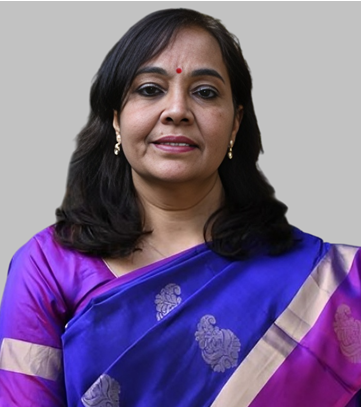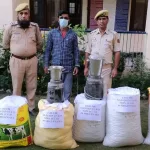India is home to approximately 2,70,000 Gram Panchayats, yet many of these local governing bodies remain uncovered by Primary Agricultural Credit Societies (PACS), Dairy, and Fisheries Cooperatives. Recognizing the vital role these primary-level cooperatives play in providing credit, inputs, markets, and employment, Modi government has approved a plan to establish new Multipurpose PACS (MPACS), Dairy and Fisheries Cooperative Societies in the uncovered Gram Panchayats.
As per the vision of ‘Sahkar se Samriddhi’ of the Prime Minister Shri Narendra Modi, the MPACS will become the cornerstone for growth in rural areas, aiming for each village to have at least one Credit, Dairy, fishery cooperative society. This initiative focuses on enhancing credit access and business opportunities in dairy, fisheries, other sectors, which will significantly contribute to rural employment and economic development.
The plan to establish 2 lakh new Multipurpose Primary Agricultural Cooperative Societies (MPACS) to cover every village and Panchayat in the country is going on under the guidance of Union Home Minister and Minister of Cooperation Shri Amit Shah and the initiative reflects the commitment of Ministry of Cooperation to unleash rural prosperity. The plan is being implemented with two pronged action plan;
- Establishing New Multipurpose PACS, dairy and Fishery Cooperative Societies covering all Panchayats and villages in next five years.
- Reinforcement of existing Cooperative societies
The target is to establish 70,000 MPACS in next five years and 56,000 new Multipurpose Dairy Cooperative Societies (MPDCS) and 6,000 new Multipurpose Fisheries Cooperative Societies (MPFCS) and strengthening the existing societies.
Implemetation Margdarshika
To ensure the successful implementation of this plan, a Margdarshika was launched by the Union Home Minister and Minister of Cooperation Shri Amit Shah. This booklet outlines standard procedures, targets, timelines, specific roles and responsibilities, and a monitoring mechanism. The guidelines for MPACS have enabled both the State and Union Territories to execute the plan in a structured manner. Implementing partners such as NABARD, NDDB, and NFDB are actively involved in the formation of MPACS.
A crucial aspect of this initiative is the convergence of Government of India schemes, including the Dairy Processing and Infrastructure Fund (DIDF), the National Dairy Development Programme (NDDP), and the Pradhan Mantri Matsya Sampada Yojana (PMMSY). The effective execution of the plan by States and Union Territories is facilitating balanced development within a specified timeframe. A top-down approach for effective coordination has been established through the Inter-ministerial Committee (IMC), along with National, State, and District Level committees. Regular monitoring and support from the Ministry of Cooperation provide a robust framework for effective implementation.
Performance of States
As per National Cooperative Database 10,458 new MPACS have been registered in the country. The formation of Multipurpose Dairy Cooperative Societies (MPDCS), Multipurpose Fisheries Cooperative Society (MPFC) and Multipurpose Primary Agricultural Cooperative Societies (MPACS) will inundate the rural ecosystem and open vast opportunities. This will lead to improving participation of small and marginal farmers, disadvantaged and vulnerable people in the rural economy. Member-centric and inclusive growth model through MPACS in aspirational and uncovered districts and panchayats will have multiplier impact on rural economy.
Uttarakhand has taken a lead in the diversification and modernisation of Primary Agricultural Credit Societies (PACS) since 2018. The introduction of Model Bye-Laws in 2023 prompted cooperative societies to evolve into Multi-Purpose Agricultural Cooperative Societies (MPACS). These societies have embraced computerisation, enabling them to operate Common Service Centres, Jana Aushadhi Kendras, LPG distribution centres, and petrol retail outlets. In Odisha, there are 1,529 MPACS that are fully integrated with Aspirational Districts, ensuring effective implementation and meaningful sectoral outcomes. Rajasthan, characterised by significant physiographic and regional disparities, has established 738 MPACS with a particular emphasis on dairy cooperatives. Similarly, Gujarat and Maharashtra are making consistent progress through extensive awareness and outreach programs aimed at transforming the rural economy by establishing MPACS.
Boost to rural economy
The rural base of India has significant, agriculture, dairy, fisheries, livestock and poultry activities which are source of livelihood however there are often constraints in access to credit and market. The Multipurpose PACS with enabling framework of adoption of Model Bye Laws will enhance rural base participation in National economic development.
The establishment of MPACS with essential infrastructure, improved access to both online and physical markets, the integration of technology, and the adoption of farm mechanization will significantly strengthen the supply chain, ultimately benefitting farmers and producers. To create effective farm-to-fork linkages in agriculture, dairy, and fishery sectors, it is crucial to focus on aggregation, agri-logistics, and providing market information to producers, enabling them to meet demand profitably. This approach will empower millions of producers to seize opportunities, expand their markets, enhance value realization, and achieve sustainable income and livelihoods.
(The Author is Director, VAMNICOM. Courtesy: PIB)








